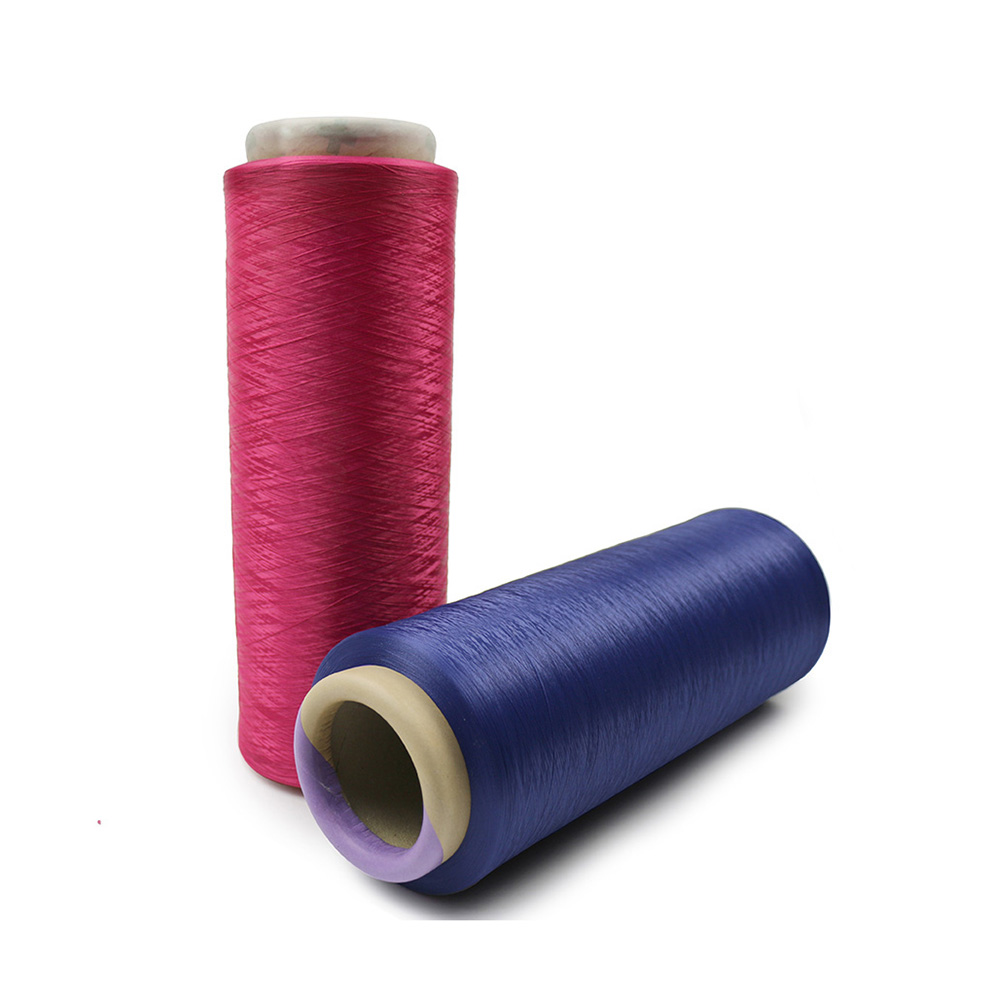If you are interested in some of our products, please feel free to visit our website or contact us for detailed information.

Low-strength polyester filament yarn and high-strength polyester filament yarn exhibit significant differences in their mechanical properties, which, in turn, influence their suitability for various applications. Here are the key distinctions between the two:
Low-Strength Polyester Filament Yarn:
1.Tensile Strength: Low-strength polyester filament yarns are characterized by a tensile strength that falls on the lower end of the spectrum. This characteristic makes them well-suited for applications where extreme tensile strength is not the primary consideration.
This inherent lower tensile strength allows the yarn to yield and stretch under moderate stress, providing a degree of flexibility that is advantageous in scenarios where pliability is crucial.
2.Elongation: In comparison to their high-strength counterparts, low-strength polyester filament yarns exhibit a higher elongation at break. This particular attribute enables the yarn to undergo more significant stretching before reaching its breaking point.
The higher elongation not only contributes to the yarn's ability to conform to various shapes and contours but also enhances its suitability for applications where flexibility and adaptability are key requirements.
3.Softness: The inherent softness and pliability of low-strength polyester filament yarns contribute to a luxurious and gentle feel. This characteristic is particularly desirable in applications where user comfort and a pleasing tactile experience are paramount.
Industries such as fashion and home textiles leverage the softness of these yarns to create garments and fabrics that prioritize comfort and a soft touch.
4.Applications: Low-strength polyester filament yarn finds common usage in the fashion and textile industries. Its characteristics make it an ideal choice for creating lightweight and soft fabrics, suitable for everyday clothing, intimate apparel, and various home furnishing applications.
High-Strength Polyester Filament Yarn:
1.Tensile Strength: Engineered for robust performance, high-strength polyester filament yarns boast a superior tensile strength. This exceptional strength allows them to withstand substantial tensile forces without experiencing failure or breakage.
Industries requiring materials with exceptional strength, such as construction and industrial manufacturing, benefit from the reliability and durability offered by high-strength polyester filament yarn.
2.Elongation: High-strength polyester filament yarns typically exhibit lower elongation at break. This particular characteristic contributes to enhanced dimensional stability, making them suitable for applications where minimal stretching is imperative to maintain the integrity of the material.
In scenarios where the ability to withstand heavy loads while maintaining structural integrity is critical, the lower elongation of these yarns becomes a valuable attribute.
3.Stiffness: The increased stiffness of high-strength polyester filament yarns provides structural support and ensures the material retains its form under various conditions. This increased stiffness is advantageous in applications where dimensional stability and shape retention are paramount.
Industries such as automotive manufacturing and geotextiles leverage the stiffness of these yarns to reinforce materials and withstand stressors, showcasing their versatility in demanding applications.
4.Applications: High-strength polyester filament yarn finds extensive applications in technical textiles, industrial settings, and products requiring a combination of strength, durability, and resistance to environmental factors. Examples include safety harnesses, tire cord, conveyor belts, and geogrids for soil stabilization.
100 polyester draw textured yarn DTY non or high intermingle

100 polyester draw textured yarn DTY non or high intermingle


 English
English Español
Español








